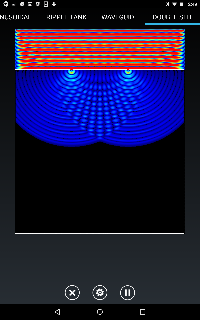Blogging has been taking a back seat to everything else in my life, lately. This week, though, I have a variety of interesting and exciting developments to share. Today’s news is an update on the indoor location company I co-founded, Q-Track.
The good news began a few month ago in November with a favorable mention in IEEE Spectrum Magazine, the flagship publication of the Institute of Electrical and Electronics Engineers. An article surveying solutions to the challenging problem of indoor location noted:
“One company offering help with that is Q-Track, based in Huntsville, Ala., which claims its indoor radiolocation system can provide submeter accuracy. It uses frequencies of about 1 megahertz, which is considerably lower than Wi-Fi. Why? “You want to have a signal that can get through a messy propagation environment,” says Hans Schantz, cofounder of Q-Track. Low frequencies can more easily penetrate the many barriers found indoors. They diffract less around obstacles, and they don’t fall prey to the multipath phenomenon, whereby the different waves caroming around inside a building interfere with one another.
“Q-Track’s system differs from Wi-Fi localization in another fundamental way: It doesn’t use signal strength to gauge the distance between transmitter and receiver. Nor does it measure the time it takes the signal to travel from transmitter to receiver, as GPS does. Instead, it cleverly exploits the fact that at frequencies of a megahertz or so, and at building-size distances (say, up to 100 meters), the receiver operates in what radio engineers call the near field of the transmitter.
“In this special zone, the emanations from a radio antenna are rather peculiar. The electric and magnetic fields do not rise and fall in lockstep, for example, as is normally the case with radio waves. And the difference in their timing (their relative phase) is, conveniently enough, a function of the distance from the transmitting antenna.
“Q-Track uses the distance-dependent difference in phase, as well as other features found only in the near field, to calculate the location of a transmitter tag with respect to fixed receivers. Those receivers are fitted with antennas that can separately measure electric and magnetic fields. Outdoors, the system is accurate to 15 centimeters, but indoors, the structural elements of a building produce errors of as much as several meters. But by mapping out the site’s radio environment first, says Schantz, the system can locate one of its tags indoors to within 40 cm.”
The article, “New Indoor Navigation Technologies Work Where GPS Can’t,” is available here.
All of us at Q-Track have been working diligently to increase the accuracy, performance, and reliability of Q-Track’s Near-Field Electromagnetic Ranging or “NFER®” Real-Time Location Systems (RTLS). That hard work paid off in December when Lockheed-Martin awarded Q-Track a $1.7 million contract to track soldiers in an urban operations training range:
- “Urban Warfighters Train With RTLS,” RFID Journal, January 14, 2014.
- “Q-Track Corporation Wins $1.7 million contract award from Lockheed Martin,” Huntsville Times, December 26, 2013.
Now, of course, we’re all having to work even harder – making sure we complete our order and deliver it on time. The increased visibility resulting from all this good news made us realize that our old website was simply not up to the demands of accurately presenting Q-Track’s product offerings and indoor location applications. This past month I undertook a complete Q-Track website renovation, including updating the website and its content to a fully responsive and adaptive WordPress template.
Finally, at lunch today I’m presenting a dry run of a workshop on Near-Field Wireless Technology, sponsored by the Huntsville Section of the IEEE. Near-field wireless technology is an emerging area of great importance in Radio Frequency Identification (RFID). Specific applications include low frequency (LF) and high frequency (HF) RFID, Near-Field Communications (NFC), and Near-Field Electromagnetic Ranging (NFER). This workshop will discuss the origins of near-field wireless, survey applications, present near-field links laws, and discuss the properties and performance of electrically- small antennas. Today’s session is a practice run for the three hour version I’ll be presenting next week at the 8th Annual IEEE International Conference on RFID.


